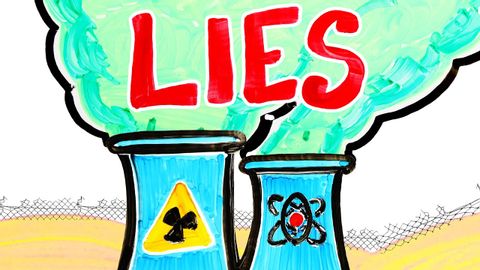原子力エネルギーに関する最大の嘘 (The Biggest Lie About Nuclear Energy)
Summer が 2021 年 03 月 25 日 に投稿  この条件に一致する単語はありません
この条件に一致する単語はありませんUS /səˈner.i.oʊ/
・
UK /sɪˈnɑː.ri.əʊ/
US /dɪˈskrɪpʃən/
・
UK /dɪˈskrɪpʃn/
US /ˈævərɪdʒ, ˈævrɪdʒ/
・
UK /'ævərɪdʒ/
- n. (c./u.)平均
- v.t.平均する
- adj.典型的な : 普通の : ありふれた : 普段の
US /ɪˈfɛktɪv/
・
UK /ɪˈfektɪv/
エネルギーを使用
すべての単語を解除
発音・解説・フィルター機能を解除
